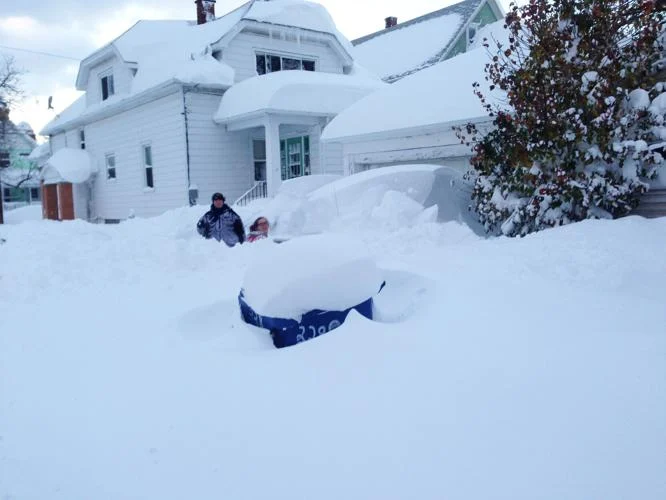Ringing in the New Year with a Snowy Surprise: Understanding Lake-Effect Snow on New Year’s Eve
Imagine this: you’re bundled up for the festivities, ready to celebrate New Year’s Eve with friends and family. As you step outside, you’re greeted by a breathtaking sight – a winter wonderland created by a sudden snowfall. But this isn’t your average snowstorm. This is lake-effect snow, a meteorological phenomenon that can transform a clear night into a blizzard in a matter of hours. This comprehensive guide explores the science behind lake-effect snow, its potential impact on New Year’s Eve celebrations, and tips for staying safe and prepared if you encounter this unique winter weather event.
The Science of Surprise: Unveiling Lake-Effect Snow
Lake-effect snow is a specific type of snowfall that occurs when cold air masses travel over large, relatively warm lakes. Here’s a breakdown of the key ingredients for this snowy phenomenon:
- Cold Air Mass: The first crucial element is a cold air mass moving across the region. Typically, air temperatures at the surface and higher altitudes need to be well below freezing.
- Warm Lake Water: The second key ingredient is a large lake with relatively warm water compared to the air mass above. The temperature difference between the air and the water creates instability in the atmosphere.
- Moisture Source: For significant snowfall, a source of moisture is needed in the air mass. This moisture is picked up by the rising air and condenses into snowflakes.
The Process:
- Cold Air Meets Warm Water: As the cold air mass travels over the warm lake water, the air picks up heat and moisture from the lake’s surface.
- Rising Air: The warmed and moistened air becomes less dense and rises rapidly due to convection.
- Adiabatic Cooling: As the air rises, it expands and cools due to a decrease in pressure. This cooling process is called adiabatic cooling.
- Condensation and Snowfall: The rising air continues to cool, causing the moisture it carries to condense into tiny water droplets. At high enough altitudes, these droplets freeze into ice crystals, which then collide and clump together to form snowflakes.
- Lake-Effect Snowfall: The wind carries these snowflakes downwind from the lake, creating a band of heavy snowfall often concentrated in a narrow zone. The specific location of the snowfall depends on the wind direction.
Factors Affecting Intensity:
- Temperature Difference: A larger temperature difference between the air and the lake water typically leads to heavier snowfall.
- Wind Speed and Direction: Strong winds blowing across the long axis of the lake can create a more intense and persistent lake-effect snowband.
- Lake Size and Depth: Larger and deeper lakes generally hold more heat and can create more significant lake-effect snow events.
New Year’s Eve Under a Snowy Sky: Potential Impacts and Considerations
While a snowy New Year’s Eve can be magical, lake-effect snow can also pose challenges. Here’s what to consider:
- Travel Disruptions: Heavy snowfall can lead to hazardous road conditions, flight cancellations, and travel delays. Be prepared for potential disruptions and adjust your travel plans accordingly.
- Power Outages: Strong winds and heavy snow can damage power lines, leading to blackouts. Ensure you have a backup plan for lighting, heating, and communication in case of a power outage.
- Limited Visibility: Heavy snowfall can significantly reduce visibility, making driving dangerous. If possible, postpone travel plans until road conditions improve.
Staying Prepared: Tips for a Safe and Snowy New Year’s Eve
If you live in an area prone to lake-effect snow, here are some tips to ensure a safe and enjoyable New Year’s Eve:
- Monitor Weather Forecasts: Closely monitor weather forecasts leading up to New Year’s Eve. Local news outlets and weather services can provide updates on the potential for lake-effect snow and its severity.
- Prepare an Emergency Kit: Have an emergency kit stocked with essential supplies like non-perishable food, bottled water, blankets, a flashlight, a battery-powered radio, and a first-aid kit.
- Charge Your Devices: Ensure your electronic devices are fully charged in case of a power outage. Consider having a portable phone charger on hand.
- Prepare Your Vehicle: If you must travel, ensure your vehicle is winterized with proper tires, wiper blades, and adequate antifreeze. Keep a winter emergency kit in your car with items like a snow shovel, traction mats, and a blanket.
- Consider Alternative Plans: If the weather forecast predicts heavy snowfall, have alternative plans for celebrating New Year’s Eve.






More Stories
Is there a lifetime limit on epidural steroid injection?
What is Section 20 of the Motor Accident Insurance Act (Queensland)?
Where to Watch USMNT vs Jamaica National Football Team